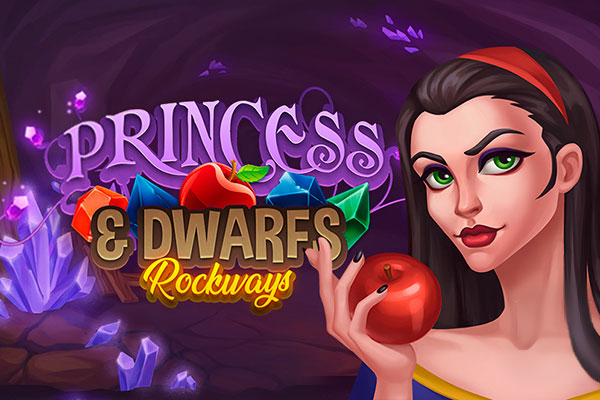PM Awas Yojana 2025: Empowering Dreams of Homeownership
The Pradhan Mantri Awas Yojana (PMAY), a flagship mission of the Government of India, stands as a beacon of hope for millions aspiring to own a home. Launched with the vision of "Housing for All by 2022," the scheme has undergone continuous evolution and adaptation to meet the dynamic needs of the nation. As we approach 2025, the PM Awas Yojana continues to be a pivotal force in transforming the landscape of affordable housing in India, addressing the critical need for accessible and sustainable homes for the urban and rural poor. This comprehensive guide delves into the intricacies of the PM Awas Yojana 2025, exploring its objectives, components, eligibility criteria, application process, and the significant impact it has had on the lives of countless beneficiaries.
Understanding the Core Objectives of PM Awas Yojana
The PM Awas Yojana, in its essence, aims to bridge the housing deficit in India by providing affordable housing solutions to Economically Weaker Sections (EWS), Low Income Groups (LIG), and Middle Income Groups (MIG). The scheme operates under two primary components:
- Pradhan Mantri Awas Yojana (Urban) [PMAY-U]: Focuses on addressing the housing needs of the urban population.
- Pradhan Mantri Awas Yojana (Gramin) [PMAY-G]: Caters to the housing requirements of the rural population.
The overarching objectives of the PM Awas Yojana 2025 remain consistent with its foundational goals:
- Affordable Housing: To make housing accessible and affordable for all eligible citizens.
- Slum Redevelopment: To rehabilitate slum dwellers through in-situ redevelopment projects.
- Credit Linked Subsidy: To provide interest subsidies on home loans to reduce the financial burden on beneficiaries.
- Sustainable Housing: To promote the construction of eco-friendly and sustainable houses.
- Empowerment: To empower women by encouraging property ownership in their names.
Why PM Awas Yojana Remains Crucial in 2025
In 2025, the PM Awas Yojana continues to be of paramount importance due to several factors:
- Persistent Housing Shortage: Despite significant progress, a considerable housing shortage persists, particularly among the economically disadvantaged sections of society.
- Urbanization: Rapid urbanization is driving increased demand for housing in urban areas, necessitating affordable housing solutions.
- Economic Growth: The scheme contributes to economic growth by stimulating the construction sector and creating employment opportunities.
- Social Inclusion: PM Awas Yojana promotes social inclusion by providing access to basic amenities and improving the quality of life for marginalized communities.
- Government Commitment: The government's unwavering commitment to the scheme ensures its continued relevance and effectiveness.
Eligibility Criteria for PM Awas Yojana 2025
To avail the benefits of the PM Awas Yojana 2025, applicants must meet specific eligibility criteria, which vary slightly between the urban and rural components:
PMAY-U Eligibility:
- Income Criteria: Applicants must belong to the EWS, LIG, or MIG categories, with specific income thresholds defined by the government.
- No Prior Ownership: The applicant or any member of their family should not own a pucca house anywhere in India.
- Family Definition: The family includes the husband, wife, unmarried sons, and unmarried daughters.
- Aadhaar Card: Possession of a valid Aadhaar card is mandatory for availing benefits under the scheme.
PMAY-G Eligibility:
- Homeless or Living in Dilapidated Houses: Beneficiaries must be homeless or living in kutcha houses with dilapidated structures.
- Socio-Economic and Caste Census (SECC) Data: Selection of beneficiaries is based on the SECC 2011 data, which identifies the most deprived households.
- Other Criteria: Other criteria include households without adult members, female-headed households, and households with disabled members.
Navigating the Application Process for PM Awas Yojana 2025
The application process for PM Awas Yojana 2025 is designed to be user-friendly and accessible. Here's a step-by-step guide:
1. Online Application (PMAY-U):
- Visit the official website of PMAY-U (https://pmaymis.gov.in/).
- Click on the "Citizen Assessment" option.
- Select the appropriate option based on your current status (e.g., "Benefit under other 3 components").
- Enter your Aadhaar number and name.
- Fill out the online application form with accurate details.
- Submit the form and note down the application number for future reference.
2. Offline Application (PMAY-U):
- Visit the nearest Common Service Centre (CSC) or municipal office.
- Obtain the application form and fill it out carefully.
- Submit the form along with the required documents.
3. PMAY-G Application:
- Beneficiaries are primarily identified through the SECC 2011 data.
- Gram Sabhas verify the eligibility of beneficiaries.
- Eligible beneficiaries are then included in the PMAY-G list.
4. Required Documents:
- Aadhaar card
- PAN card
- Income proof (salary slips, income certificate)
- Address proof (ration card, voter ID)
- Bank statement
- Affidavit stating that the applicant or their family does not own a pucca house
Unveiling the Benefits and Subsidies Under PM Awas Yojana 2025
The PM Awas Yojana 2025 offers a range of benefits and subsidies to make housing affordable:
- Credit Linked Subsidy Scheme (CLSS): Provides interest subsidies on home loans for EWS, LIG, and MIG categories. The subsidy amount and loan tenure vary based on the income category.
- Subsidy for Beneficiary-led Construction: Provides financial assistance to individuals for constructing their own houses.
- Affordable Housing in Partnership: Encourages private developers to build affordable housing projects in partnership with the government.
- In-situ Slum Redevelopment: Provides financial assistance for the rehabilitation of slum dwellers through redevelopment projects.
Here's a breakdown of the CLSS benefits:
| Income Category | Maximum Loan Amount | Interest Subsidy | Maximum Subsidy Amount |
|---|---|---|---|
| EWS | Up to ₹6 lakh | 6.5% | ₹2.67 lakh |
| LIG | Up to ₹6 lakh | 6.5% | ₹2.67 lakh |
| MIG I | Up to ₹9 lakh | 4% | ₹2.35 lakh |
| MIG II | Up to ₹12 lakh | 3% | ₹2.30 lakh |
The Impact of PM Awas Yojana: Transforming Lives
The PM Awas Yojana has had a profound impact on the lives of millions of Indians, providing them with access to safe, affordable, and sustainable housing. The scheme has:
- Improved Living Conditions: Provided beneficiaries with access to basic amenities such as water, sanitation, and electricity, improving their overall quality of life.
- Empowered Women: Encouraged property ownership in women's names, empowering them and enhancing their social status.
- Stimulated Economic Growth: Boosted the construction sector, creating employment opportunities and contributing to economic growth.
- Reduced Slums: Contributed to the reduction of slums and the improvement of urban environments.
- Promoted Social Inclusion: Provided access to housing for marginalized communities, promoting social inclusion and reducing inequality.
PM Awas Yojana 2025: Addressing Challenges and Charting the Future
While the PM Awas Yojana has achieved significant success, challenges remain in ensuring its effective implementation and reaching all eligible beneficiaries. These challenges include:
- Land Availability: Scarcity of land in urban areas poses a significant challenge to the construction of affordable housing.
- Funding Constraints: Ensuring adequate funding for the scheme is crucial for achieving its targets.
- Awareness: Raising awareness about the scheme among potential beneficiaries is essential for increasing its uptake.
- Implementation Bottlenecks: Addressing implementation bottlenecks and streamlining the application process can improve efficiency.
Looking ahead, the PM Awas Yojana 2025 is expected to focus on:
- Leveraging Technology: Utilizing technology to improve the efficiency and transparency of the scheme.
- Promoting Sustainable Construction: Encouraging the use of eco-friendly materials and construction techniques.
- Public-Private Partnerships: Fostering public-private partnerships to increase the supply of affordable housing.
- Capacity Building: Building the capacity of local bodies and construction workers to ensure quality construction.
Frequently Asked Questions (FAQs) about PM Awas Yojana 2025
Q: Who is eligible for PM Awas Yojana?
A: EWS, LIG, and MIG categories are eligible for PMAY-U, while homeless or those living in dilapidated houses are eligible for PMAY-G. Specific income criteria and other conditions apply.
Q: How can I apply for PM Awas Yojana?
A: You can apply online through the PMAY-U website or offline through CSCs or municipal offices. For PMAY-G, beneficiaries are primarily identified through SECC 2011 data.
Q: What documents are required for PM Awas Yojana application?
A: Aadhaar card, PAN card, income proof, address proof, bank statement, and an affidavit stating no prior ownership of a pucca house are required.
Q: What is the Credit Linked Subsidy Scheme (CLSS)?
A: CLSS provides interest subsidies on home loans for eligible categories under PMAY. The subsidy amount and loan tenure vary based on the income category.
Q: How much subsidy can I get under CLSS?
A: The subsidy amount varies based on the income category, ranging from ₹2.30 lakh to ₹2.67 lakh.
Q: What is the maximum loan amount eligible for subsidy under CLSS?
A: The maximum loan amount eligible for subsidy ranges from ₹6 lakh to ₹12 lakh, depending on the income category.
Q: Is Aadhaar card mandatory for PM Awas Yojana?
A: Yes, possession of a valid Aadhaar card is mandatory for availing benefits under the scheme.
Q: How are beneficiaries selected for PMAY-G?
A: Beneficiaries are primarily identified through the SECC 2011 data, and their eligibility is verified by Gram Sabhas.
Q: What is the objective of PM Awas Yojana?
A: The main objective is to provide affordable housing to all eligible citizens by 2022 (now extended), addressing the housing deficit and promoting sustainable housing.
Conclusion: PM Awas Yojana 2025 - A Catalyst for Change
The PM Awas Yojana 2025 continues to be a transformative initiative, playing a crucial role in realizing the dream of homeownership for millions of Indians. By addressing the housing shortage, promoting sustainable construction, and empowering marginalized communities, the scheme is contributing to a more inclusive and prosperous India. As the scheme evolves and adapts to meet the changing needs of the nation, it remains a vital instrument for achieving the vision of "Housing for All" and building a brighter future for generations to come. If you believe you are eligible, explore the application process and take a step towards owning your dream home today.
Slots and Games

{{Games-kaz}}

Wilds of Fortune

Aztec Sun Hold and Win

Shake shake Leprechaun

The Princess & Dwarfs

Aloha King Elvis

Aztec Magic Megaways

Miss Cherry Fruits

Shake Shake Money Tree

Shark Spin